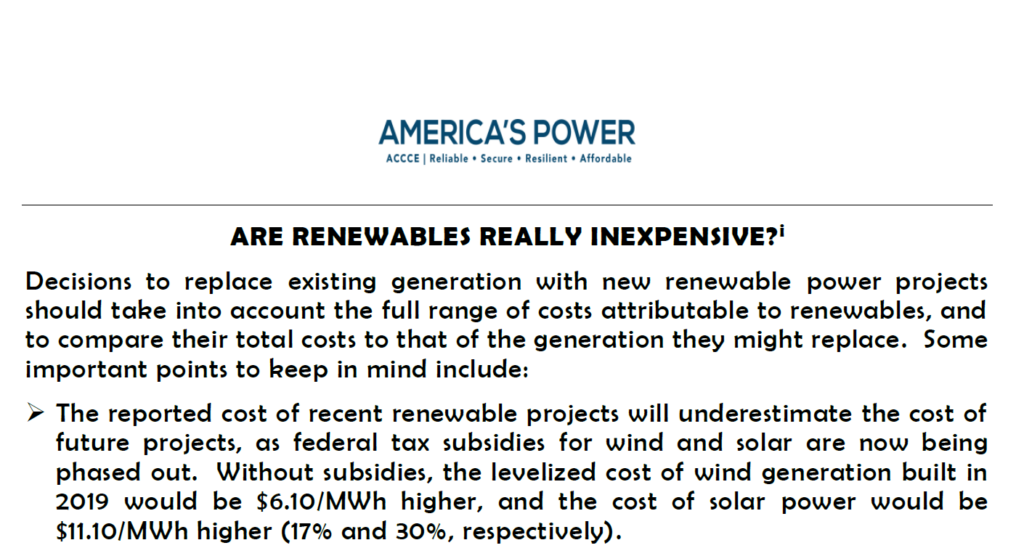Decisions to replace existing generation with new renewable power projects should take into account the full range of costs attributable to renewables, and to compare their total costs to that of the generation they might replace. Some important points to keep in mind include:
- The reported cost of recent renewable projects will underestimate the cost of future projects, as federal tax subsidies for wind and solar are now being phased out. Without subsidies, the levelized cost of wind generation built in 2019 would be $6.10/MWh higher, and the cost of solar power would be $11.10/MWh higher (17% and 30%, respectively).
- Public estimates of the direct levelized cost of electricity (LCOE) for new renewables vary widely and depend on critical assumptions that can lead to a wide range of cost estimates. For example, the National Renewable Energy Laboratory estimates a range of costs from $33/MWh to $59/MWh for new solar projects, and $30/MWh to $143/MWh for new land-based wind farms.
- Research comparing the direct LCOE of new renewables to existing generators has found that, on average, renewables remain more expensive than the coal, natural gas, and nuclear generation they would replace.
- The intermittent nature of wind and solar power requires other resources on the grid to operate less efficiently than they otherwise would in order to support the renewable output and maintain reliability, increasing the cost of the rest of the system. These “imposed costs” can be over $20/MWh and should be attributed to the renewables that cause them.
- Wind and solar have low operating costs and can distort electricity prices in power markets. If markets don’t have mechanisms to compensate other generators for the imposed costs of renewables, reliability issues could arise. This was recently seen in the Texas market, where high levels of wind caused persistently low prices that led to the retirement of 5,000 MW of coal units in 2018. Without this capacity in place, the record level of demand reached in August forced ERCOT to declare emergency conditions.
- Due to their location away from existing transmission facilities, new wind and solar projects typically require substantial transmission upgrades. These costs are rarely included in LCOE estimates, but would add upwards of 40% to the capital cost of renewables. Similarly, new natural gas infrastructure may be required for generators that are needed to back up intermittent wind and solar generation.
- The total cost of new renewables includes the direct cost of building and operating them, as well as the imposed costs and infrastructure costs they create. Comparing renewables to existing generators without including their full cost may lead to economically bad decisions.
September 2019

